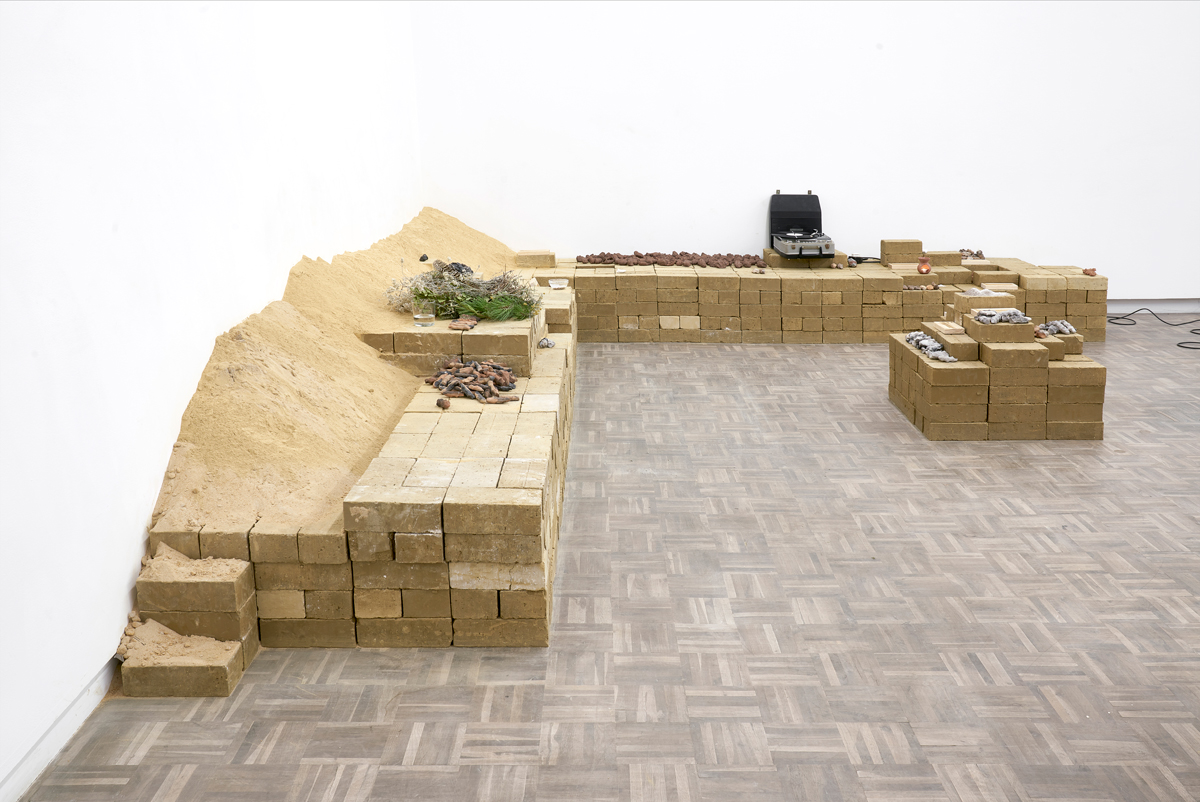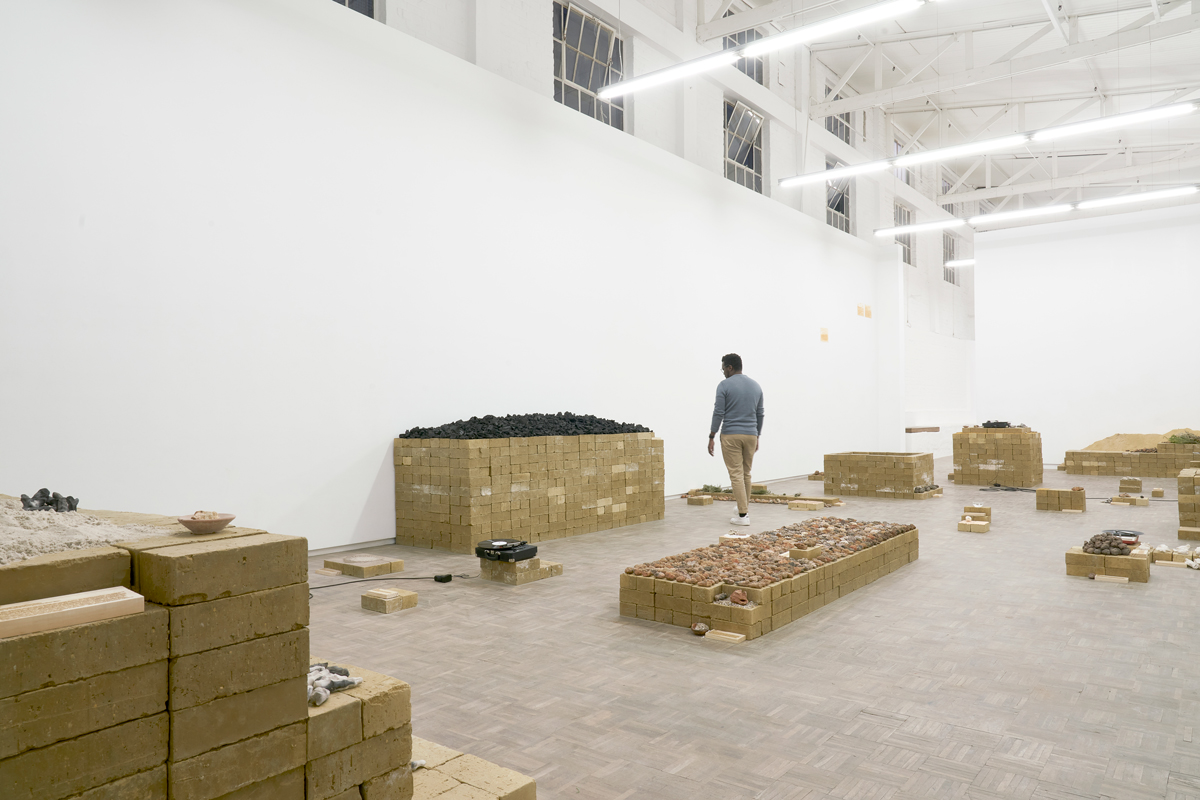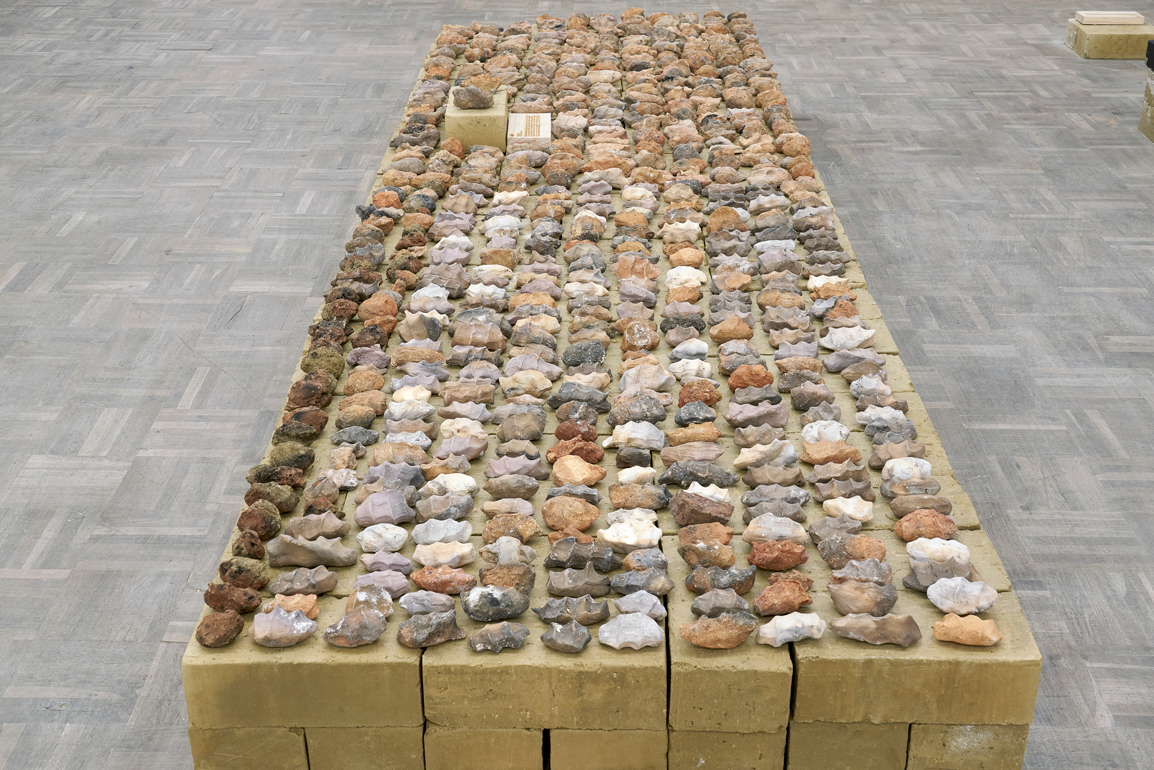


























And when they called home, what did they say?
Ile aye, moya, là, ndokh….
*Il aye, earth, (Yoruba, West Africa)
Moya, wind, (Nguni/Sepedi, South Africa)
Là, fire, (Ga,Ghana)
Ndokh, water, (Wolof, Senegal)1
Moya, wind, (Nguni/Sepedi, South Africa)
Là, fire, (Ga,Ghana)
Ndokh, water, (Wolof, Senegal)1
blank is pleased to announce Dineo Seshee Bopape’s first solo exhibition with the gallery, titled Master Harmoniser (Ile aya, moya, la, ndokh). Comprised of two major installations conceived between 2016 and 2021, the exhibition also marks the artist’s first showing in Cape Town in nearly a decade.
Bopape’s artistic process engages with the matter of self-sovereignty, “exploring the metaphysics of ‘self-presence’ (the sense of being present to one’s self) and matter (in the literal, alchemical and symbolic sense) often surveying the wounds of the personal and collective body; this at times through the historical contexts
Working with carefully selected and measured quantities of soil, ash, charcoal, and other living substances, Bopape invokes the resonances of these materials to speak about the immaterial. In the sprawling Lerole: footnotes (The struggle of memory against forgetting), locally-sourced raw clay bricks are stacked in low piles throughout the space, upon which rest mounds of earth and clay impressions taken from the inside of a closed fist. Intimate embodiments of ‘self-presence’, these hand-squeezed objects also recall a gesture enacted by South African activist Robert Sobukwe who, during his banishment by the Apartheid state to Robben Island, raised a fistful of earth into the air as a show of solidarity with the newly incarcerated political prisoners.
Each cluster in the constellation represents an in-process event of self-sovereignty expressed through a collective act of anticolonial resistance, the distilled histories of which are etched onto accompanying wooden plaques. Collapsing these events together in nonlinear time and space, this earthen mise-en-scène - resembling “a memorial, a garden, and an abstract landscape”3 - is animated by audio recordings played from portable record players. The sounds of various water bodies surrounding the African coastline are juxtaposed with the birdcalls of the Quetzal from South- and Central America, drawing on this sacred bird’s symbolisation of freedom due to its inability to survive in captivity.
Lending the exhibition the title Master Harmoniser is a collection of drawings made with water and soil sourced from a number of important sites associated with the Trans-Atlantic slave trade, including Île de Gorée in Senegal, the Achimota Forest in Ghana, and the James and Mississippi Rivers in the United States. Installed in grids on the gallery walls, the visual effect of these earth-drawn waterways is one of a continuous film strip, with each frame imbuing a different view of the ocean against an ever-continuing horizon. The artist’s abstracted markings bear reference to the heavy skin lacerations on the back of an African American man named Peter (often misnamed Gordon), a self-liberated slave whose extensive scars from back lashings were documented as evidence of the cruelty of slavery during the abolition era. Presented as a single, immersive environment, Master Harmoniser draws together disparate locations inextricably linked to each other by a shared history of chattel slavery and the memories of those who moved through them.
In the fictional world4 created by Nigerian-American author Nnedi Okorafor, the master harmonisers are able to communicate peacefully across the boundaries that separate the world into discrete categories of human, nonhuman, natural, and artificial. For Bopape, transcending the binary systems separating “‘nature time’/natural processes/, global human events, and +’s and -‘s”5 is critical to her practice, as is the notion of the interconnectedness between events of the past, present and future.
And in the words of Stevie Wonder on Master Blaster:
We're in the middle of the makin's of the master blaster jammin’… moving towards the brightest star…
1 Dineo Seshee Bopape, exhibition text for Ile aye, moya, là, ndokh…harmonic conversions…mm at Institute of Contemporary Art at Virginia Commonwealth University (September 2021)
2 The artist in conversation
3 Robert Preece, ‘Dineo Seshee Bopape’ for Sculpture Magazine (October 2018)
4 Nnedi Okorafor’s Binti series is a trilogy of Africanfuturist science fiction novellas published between 2015 and 2018.
5 The artist in conversation